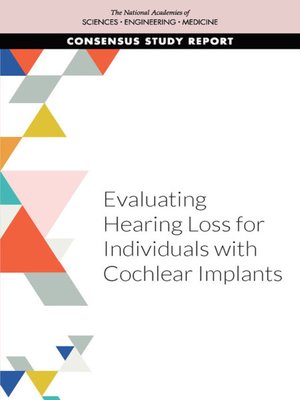Evaluating Hearing Loss for Individuals with Cochlear Implants
ebook
By National Academies of Sciences, Engineering, and Medicine

Sign up to save your library
With an OverDrive account, you can save your favorite libraries for at-a-glance information about availability. Find out more about OverDrive accounts.
Find this title in Libby, the library reading app by OverDrive.



Search for a digital library with this title
Title found at these libraries:
| Library Name | Distance |
|---|---|
| Loading... |
The U.S. Social Security Administration (SSA) administers programs that provide disability benefits. Once SSA establishes the presence of a severe impairment, it determines whether the impairment meets the criteria in the Listing of Impairments (Listings) that qualify a candidate for disability benefits.
The current Listings that address hearing loss treated with cochlear implantation contain criteria that evaluate hearing ability through a speech recognition test called the Hearing in Noise Test (HINT). Since its development in 1994, the HINT has been widely used to measure cochlear implant candidacy and postoperative outcomes. However, the test characteristics, the state of cochlear implant technology, and the environment that made the HINT a common choice of assessment in 1994 are different in 2021. The HINT has several limitations in its characteristics and deviation from its intended use.
At the request of SSA, the National Academies of Sciences, Engineering, and Medicine convened a consensus study committee to identify and recommend generalized testing procedures and criteria for evaluating the level of functional hearing ability needed to make a disability determination in adults and children after cochlear implantation. The committee's report, Evaluating Hearing Loss for Individuals with Cochlear Implants, details and supports its findings, conclusions, and recommendations based on published evidence and professional judgment.







